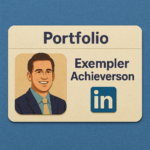LinkedIn is the world’s leading professional social network. For most professionals, it is vital to have a strong presence on the platform, and it is a highly effective tool when it comes to seeking out new connections and opportunities.
hile the mechanics of actually setting up a profile are easy, optimizing your profile to be an effective professional tool is a much more challenging process.
In this article, we will take you through exactly what to include in your LinkedIn profile to create a presence on the platform that is highly discoverable for all the right reasons and effectively communicates your experience and aspirations as a professional. Read on for our top nine LinkedIn profile tips.

As Head of Customer Success, Lusine specializes in helping businesses achieve measurable growth by transforming underperforming campaigns into success stories. Lusine writes impactful articles that reflect her deep expertise in social media strategy and digital marketing, offering insights that drive engagement and deliver results. Combining data-driven analysis with a focus on client success, she makes sure every strategy aligns with business goals and exceeds expectations


The digital-first professional landscape requires a strong online presence, and it is crucial for career growth. LinkedIn stands out as the premier platform for building your professional brand.…

Nowadays, digital marketing and personal branding on social media platforms have become a vital tool for professionals and businesses. Among these, LinkedIn stands out as the preeminent platform…

When people think of LinkedIn, they often picture a place for job updates and networking. But today, LinkedIn has become much more than that. It’s now one of…